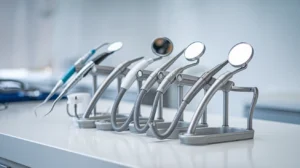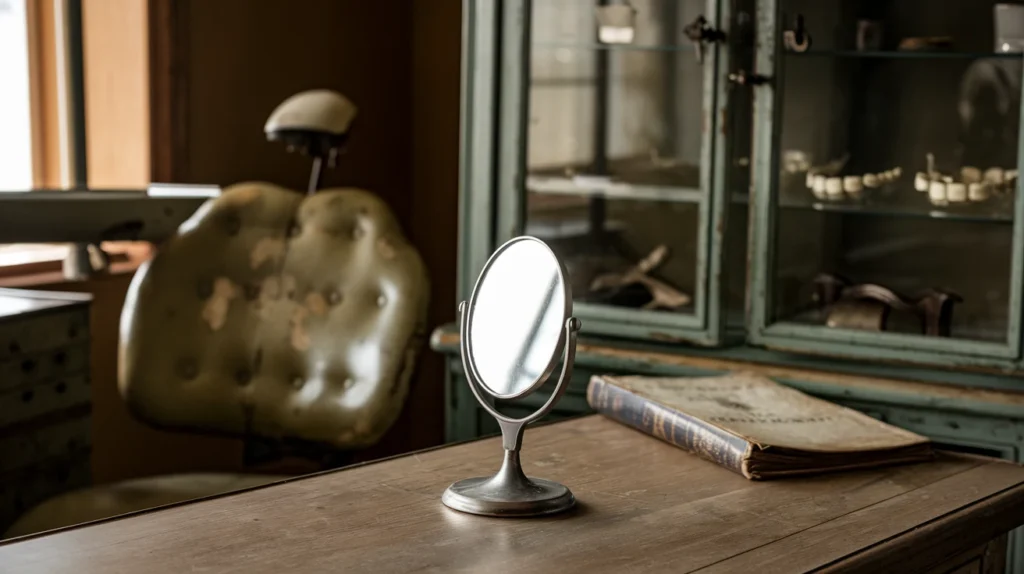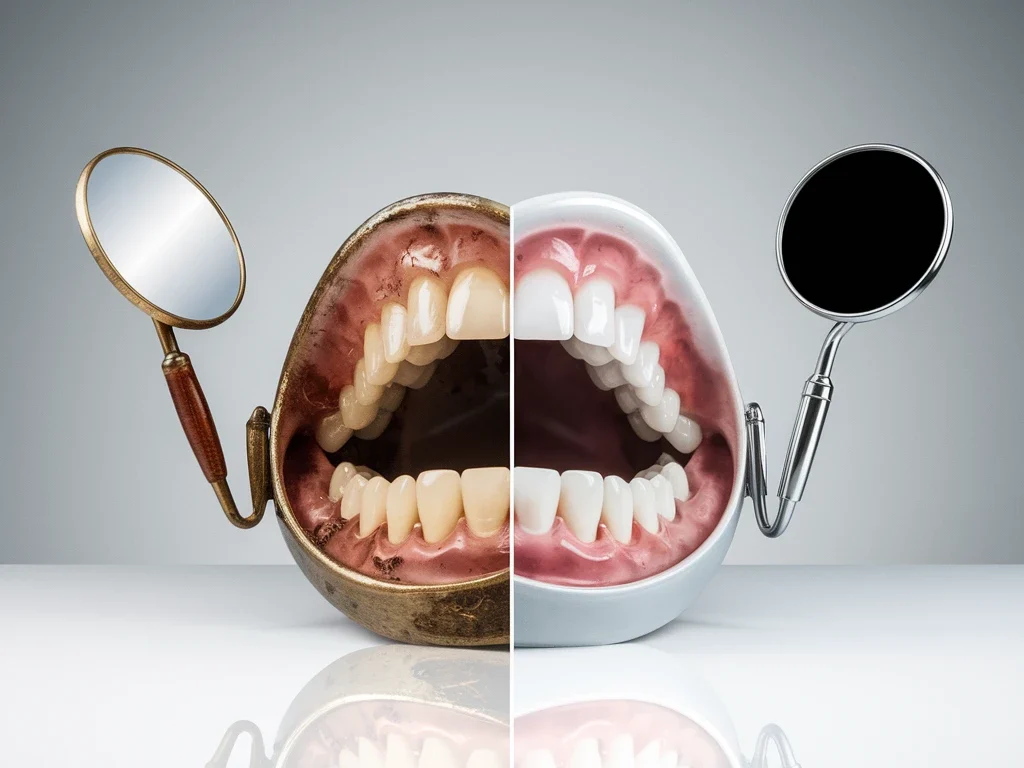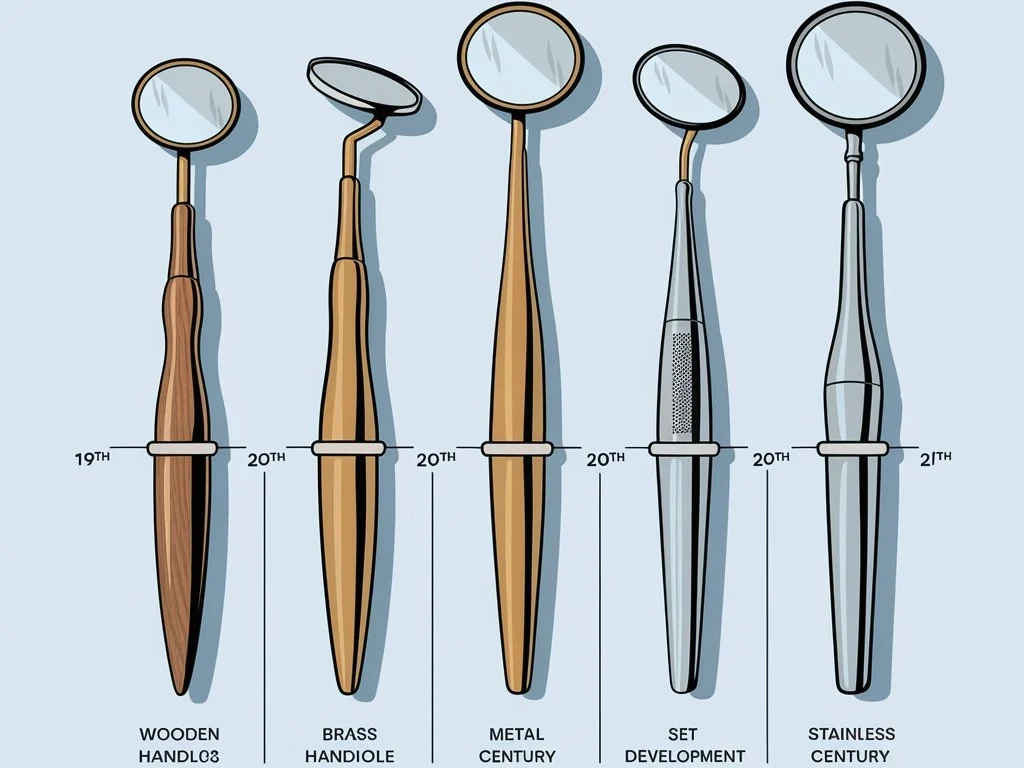
How to Choose the Best Dental Mouth Mirror for Oral Care
Picking the right dental mouth mirror might seem like a small task, but it’s actually pretty important for keeping your teeth and gums healthy. With so many options out there,

Ever thought about the small mirror your dentist uses? Known as the dental mouth mirror, this tool has a rich history. It goes way back to ancient times and has evolved a lot since then. This article explores its journey from ancient tools to the high-tech versions we see today. We’ll look at how it started, the changes it went through, and what the future holds. Let’s dig into the history of the dental mouth mirror and see how it became a staple in dental care.
In ancient times, civilizations like Egypt and Rome had their own unique ways of dealing with dental problems. The Egyptians, for instance, used a variety of herbal concoctions and even resorted to drilling into teeth to relieve pain. They were among the first to recognize the importance of dental health, even if their methods were primitive by today’s standards. Romans, on the other hand, had a more advanced approach, using gold wires to bind loose teeth and creating rudimentary dentures from animal teeth.
Back then, dental tools were all about relieving pain rather than preventing it. Imagine using flint-tipped drills or metal picks to treat cavities! These tools were crude and often caused more discomfort than relief, but they were the best options available. Over time, these instruments evolved, becoming more sophisticated as our understanding of oral health improved.
Cultural beliefs played a huge role in ancient dental practices. For example, in some cultures, dental health was linked to spiritual well-being. People believed that toothaches were the result of evil spirits or displeased gods. Such beliefs influenced the way dental care was approached and the types of remedies people used. Interestingly, these cultural practices, like the use of chewing sticks in India, have left a lasting impact on modern dental hygiene rituals.
The journey from ancient dental practices to today’s sophisticated tools is a testament to human ingenuity and adaptability. While ancient tools were rudimentary, they laid the groundwork for the advanced technologies we benefit from today.
The dental mouth mirror, a staple in modern dentistry, was not always part of the dental toolkit. Its invention marked a significant shift in how dentists approached oral examinations. Before its creation, dentists relied heavily on rudimentary tools and direct vision, which limited their ability to see into every nook and cranny of the mouth. The mouth mirror changed all that by providing indirect vision, allowing dentists to view areas that were previously hidden. This innovation was pivotal, as it improved diagnostic accuracy and treatment outcomes. Early designs were simple, featuring a small mirror attached to a handle, but even these basic tools were a game changer.
In the beginning, dental mirrors were crafted from materials that were readily available and easy to work with. Typically, the mirrors were made from polished metal, such as silver or stainless steel, which offered a reflective surface. Over time, glass mirrors became more common, providing clearer and more reliable reflections. The choice of materials was crucial, as it affected the durability and clarity of the mirror. As technology advanced, so did the materials, leading to the development of mirrors that were more resistant to scratching and corrosion.
The adoption of the dental mouth mirror into everyday practice was gradual but steady. Initially, some dentists were skeptical about its usefulness, preferring to stick to traditional methods. However, as more practitioners began to see the benefits of enhanced visibility and precision, the tool gained popularity. Dentists found that the mirror not only improved their ability to diagnose conditions but also made procedures more efficient.
The dental mouth mirror quickly became an indispensable part of the dentist’s toolkit, symbolizing a new era in dental care where visibility and precision were prioritized.
Today, it’s hard to imagine a dental practice without this essential tool, which continues to evolve with new materials and designs that further enhance its functionality.

Back in the day, dental mirrors were pretty basic. It was just a piece of glass with a shiny surface. Then, someone had the bright idea to coat one side of the glass with a reflective material. This was a game-changer. Suddenly, dentists could see those hard-to-reach spots in the mouth. Reflective surfaces made dental work way more precise.
Magnifying mirrors took it a step further. These mirrors didn’t just reflect; they zoomed in on the teeth. Imagine trying to see a small cavity with a regular mirror. Now, with a magnifying mirror, dentists could spot issues much earlier. It’s like going from a standard TV to HD.
With these advancements, dental diagnostics improved a lot. Dentists could now detect problems sooner, which meant treatments could start earlier. This is where smart mirrors come into play, offering more than just reflection—think augmented reality and sensors. These innovations have made dental diagnostics not just about seeing, but understanding what’s going on in the mouth.
Dental mirrors have come a long way, from simple reflective tools to complex diagnostic aids. As technology continues to evolve, who knows what the future holds for these essential instruments?
Today’s dental mirrors aren’t just about reflecting light; they’re about comfort too. Dentists are now using ergonomic designs that make holding and maneuvering these mirrors a lot easier during long procedures. These designs often include angled handles and lightweight materials that reduce fatigue for dental professionals. The focus is on making these tools as user-friendly as possible, ensuring that both dentists and patients have a smoother experience.
Hygiene is a big deal in dental practices, and modern mouth mirrors have adapted to meet these needs. Many are now available in disposable forms, which are great for one-time use, reducing the risk of cross-contamination. On the flip side, sterilizable options are also popular, allowing for repeated use after thorough cleaning. This dual approach helps maintain high standards of infection control in dental clinics.
The integration of digital technology into dental mirrors is a game-changer. Some mirrors now come with built-in cameras or sensors, providing real-time images that can be displayed on a screen. This advancement not only aids in diagnosis but also enhances patient communication, as they can see what the dentist sees. A three-in-one dental mirror enhances the operator’s visibility, facilitating improved diagnosis and treatment in oral care. This tech-savvy approach is paving the way for more precise and informed dental care.
Modern dental mirrors are more than just reflective surfaces; they are evolving into sophisticated tools that blend comfort, hygiene, and technology to enhance dental practice efficiency and patient care.
Dental mirrors are the unsung heroes in the dental toolkit. They help dentists see parts of the mouth that are otherwise hidden. Without these mirrors, dentists would have a tough time seeing what they need to fix. They allow for indirect vision, which means the dentist can see the back of a tooth or other hard-to-reach areas by looking in the mirror. This tool is crucial for precision, ensuring that treatments are done accurately.
Minimally invasive dental techniques focus on preserving as much of the natural tooth as possible. Dental mirrors play a key role here by providing a clear view of the area needing treatment. They help dentists perform procedures with less damage to surrounding tissues. This approach not only helps in maintaining oral health but also speeds up recovery times for patients.
Patient safety is a top priority in dentistry, and dental mirrors contribute significantly to it. By offering enhanced visibility, these mirrors help in protecting patients from accidental injuries during procedures. They also aid in maintaining a sterile environment; many modern mirrors are designed to be easily sterilized or disposed of after use, reducing the risk of infection.
Dental mirrors are more than just reflective surfaces; they are essential tools that enhance the dentist’s ability to provide safe and effective care.
Keeping dental mirrors clean and free from germs is super important. These tools go right into a patient’s mouth, so they need to be as clean as possible. Proper sterilization methods are key here. Dentists often use autoclaves or chemical disinfectants. But, sometimes, even the best practices can fall short, leading to risks of cross-contamination. It’s crucial for dental clinics to have strict protocols to ensure that every tool is safe for use.
Dental mirrors can be pricey, especially the ones with advanced features like magnification or ergonomic designs. For some clinics, especially those in less affluent areas, buying and maintaining these tools can be a challenge. Here’s a quick look at some factors affecting costs:

Using a dental mirror might seem straightforward, but it actually requires skill and practice. Dentists need to learn how to position the mirror for the best view without causing discomfort to the patient. Training programs often focus on:
Dentists must continuously update their skills to keep up with new tools and techniques. This ongoing education is vital to improving patient care and ensuring the effective use of dental mirrors.
To learn more about how a mouth mirror is essential in dentistry, enhancing precision and improving visibility, check out our detailed discussion on its role in dental checkups.
The future of dental mirrors is looking pretty high-tech. Smart mirrors are on the horizon, equipped with sensors that could change the game for dentists. Imagine a mirror that not only reflects but also provides real-time data about a patient’s oral health. These sensors could detect temperature changes, moisture levels, or even specific bacteria, giving dentists a heads-up on potential issues before they become serious problems. Such innovations could lead to quicker, more accurate diagnoses, making dental visits more efficient.
As the world becomes more environmentally conscious, the dental industry is also stepping up. Future dental mirrors might be crafted from sustainable materials, reducing their environmental footprint. Think biodegradable handles or mirrors made from recycled metals. Not only does this benefit the planet, but it also appeals to eco-conscious patients who are looking for greener options in every aspect of their lives.
Artificial intelligence is making waves in nearly every field, and dentistry is no exception. Dental mirrors might soon be paired with AI to enhance diagnostic capabilities. For instance, an AI system could analyze reflections and identify areas of concern, assisting dentists in spotting issues that might be easy to miss. This kind of technology could be particularly useful in identifying early signs of decay or gum disease, ultimately leading to better patient outcomes.
The integration of smart technology in dental mirrors, like the Smart Dental Mirror by OptiView Technologies, promises to revolutionize how oral health is monitored and managed. By combining high-resolution imaging with AI, these mirrors could significantly improve patient comfort and engagement.
In summary, the future of dental mirrors is not just about better visibility but also about smarter, more sustainable tools that could transform the dental experience for both practitioners and patients. With advancements like these, the humble dental mirror is poised to become an essential player in modern dental care.
So, there you have it, the journey of the dental mouth mirror from its humble beginnings to the high-tech tool it is today. It’s kind of amazing to think about how something so simple has been around for ages, yet it keeps evolving. From ancient times when folks used whatever they could find to check out their teeth, to now, with mirrors that help dentists see every nook and cranny of your mouth. It’s clear that innovation never stops. As dental technology continues to advance, who knows what the future holds for this trusty tool? One thing’s for sure, though—it’s here to stay, helping dentists keep our smiles healthy and bright.
A dental mouth mirror helps dentists see hard-to-reach areas inside your mouth. It reflects light and provides a clear view of your teeth and gums.
In ancient times, people used simple tools and natural remedies like ashes and eggshells to clean their teeth and relieve pain.
The dental mouth mirror was invented in the 19th century and has since become an essential tool in dental practices.
Dental mirrors are usually made of metal and glass. Modern versions might also have plastic components for disposable options.
Modern dental mirrors often have ergonomic designs and can be disposable or sterilizable. Some even have digital technology for better diagnostics.
Sterilization prevents the spread of germs and infections, ensuring that dental treatments are safe for patients.

Picking the right dental mouth mirror might seem like a small task, but it’s actually pretty important for keeping your teeth and gums healthy. With so many options out there,

Dental mirrors have come a long way. From simple reflective tools to sophisticated gadgets, they play a key role in modern dentistry. With constant innovation in dental mirrors, these aren’t

Hey there, dental pros! Today, we’re diving into something super important but often overlooked—how to properly mouth mirror sterilization. If you’re in the dental field, you know these little tools
At The Surgical Kit, we are committed to providing healthcare professionals with the finest tools to ensure precision and safety in every procedure.